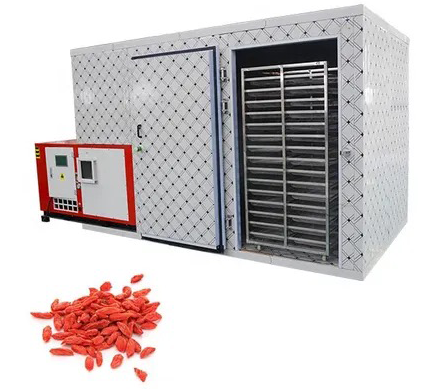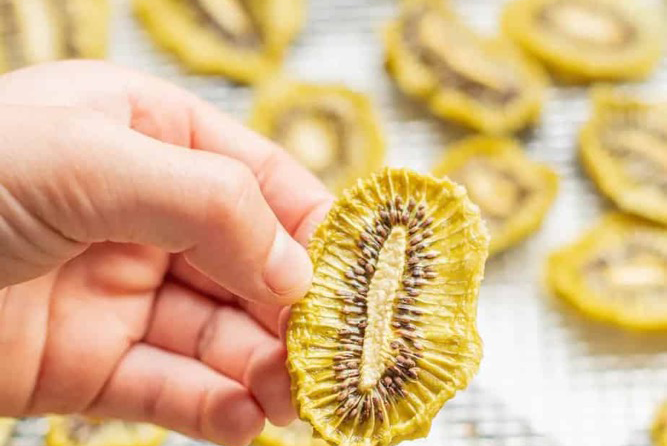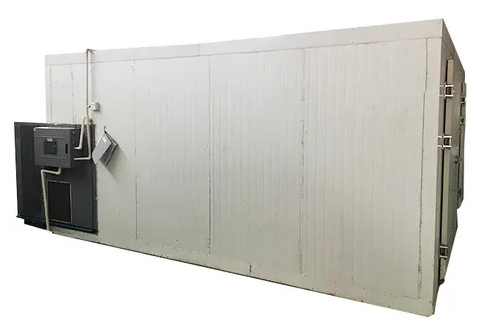
Content Menu
● Introduction
● Understanding Food Drying Technologies
>> Heat Pump Dryers
>> Vented Dryers
● Key Differences Between Heat Pump Dryers and Vented Dryers
● Advantages of Heat Pump Dryers for Food Drying
>> 1. Energy Efficiency
>> 2. Gentle Drying Process
>> 3. Environmental Impact
>> 4. Versatility
>> 5. Reduced Need for Ventilation
● Disadvantages of Vented Dryers
● Applications of Heat Pump Dryers in Food Processing
>> Fruits and Vegetables
>> Herbs and Spices
>> Meat Products
>> Snack Foods
● Innovations in Heat Pump Technology
>> Smart Controls
>> Energy Recovery Systems
>> Modular Designs
● Conclusion
● FAQ
>> 1. What is the main difference between a heat pump dryer and a vented dryer?
>> 2. Are heat pump dryers more expensive than vented dryers?
>> 3. Can I use a heat pump dryer for all types of food?
>> 4. How does the drying temperature affect food quality?
>> 5. Do I need special ventilation for a heat pump dryer?
Introduction
In the world of food processing, drying is a crucial step that enhances the shelf life and quality of food products. As a manufacturer of food drying machines in China, we understand the importance of selecting the right drying technology. Among the various options available, heat pump dryers and vented dryers are two popular choices. This article will explore why heat pump dryers are often preferred over vented dryers, especially for food drying applications.

Understanding Food Drying Technologies
Before diving into the specifics of heat pump and vented dryers, it is essential to understand how these technologies work.
Heat Pump Dryers
Heat pump dryers utilize a refrigeration cycle to remove moisture from food products. They operate by:
- Evaporating Refrigerant: The process begins with the evaporator, where refrigerant absorbs heat from the environment and evaporates.
- Compressing Refrigerant: The vaporized refrigerant is then compressed, raising its temperature and pressure.
- Condensing Refrigerant: The hot, high-pressure refrigerant passes through a condenser, where it releases heat to the food being dried while condensing back into a liquid.
- Recycling Air: The air is circulated within the dryer, allowing for efficient moisture removal without significant heat loss.
Vented Dryers
Vented dryers, on the other hand, operate by:
- Heating Air: These dryers use electric or gas heating elements to warm up air.
- Blowing Air: The heated air is blown into the drying chamber where it absorbs moisture from the food.
- Exhausting Air: The moist air is then vented outside, requiring constant fresh air intake to replace it.
Key Differences Between Heat Pump Dryers and Vented Dryers
The differences between heat pump dryers and vented dryers are significant and can impact operational efficiency, energy consumption, and product quality.
| Feature | Heat Pump Dryer | Vented Dryer |
| Energy Efficiency | Highly energy-efficient; uses less electricity | Less energy-efficient; consumes more power |
| Temperature Control | Operates at lower temperatures (30-70°C) | Operates at higher temperatures (up to 80°C) |
| Moisture Recovery | Recirculates moisture; reduces environmental impact | Exhausts moisture outside; requires fresh air |
| Initial Cost | Higher initial investment | Lower initial investment |
| Operating Cost | Lower due to energy efficiency | Higher due to energy consumption |
| Maintenance | Requires specialized maintenance | Easier maintenance; more straightforward |
Advantages of Heat Pump Dryers for Food Drying
1. Energy Efficiency
Heat pump dryers are significantly more energy-efficient compared to vented dryers. They recycle heat within the system, which reduces overall energy consumption. For businesses looking to lower operational costs, this efficiency translates into substantial savings over time. According to industry studies, heat pump dryers can save up to 50% more energy than traditional vented models.
2. Gentle Drying Process
The lower operating temperatures of heat pump dryers minimize the risk of cooking or damaging delicate food products. This gentle drying process helps preserve flavor, color, and nutritional value, making it ideal for fruits, vegetables, herbs, and meats. For instance, when drying fruits like strawberries or apples, maintaining lower temperatures prevents caramelization and retains their natural sweetness.

3. Environmental Impact
By recirculating moisture and using less energy, heat pump dryers have a smaller carbon footprint than vented dryers. They contribute to sustainability efforts by reducing greenhouse gas emissions associated with energy production. In an era where environmental consciousness is paramount, businesses can enhance their brand image by adopting eco-friendly technologies like heat pump drying systems.
4. Versatility
Heat pump dryers can handle a wide range of products due to their adjustable temperature settings. This flexibility allows manufacturers to dry various foods without compromising quality. For example, they can effectively dry both high-moisture content foods like vegetables and low-moisture items like nuts with precision control over humidity levels.
5. Reduced Need for Ventilation
Unlike vented dryers that require proper ventilation systems to exhaust moist air outside, heat pump dryers can be installed in areas without extensive ventilation infrastructure. This feature simplifies installation and reduces additional construction costs. It also allows for placement in various environments—be it large-scale factories or small artisanal kitchens—without the need for complex ductwork.
Disadvantages of Vented Dryers
While vented dryers have their place in certain applications, they come with several disadvantages:
- Higher Energy Consumption: Vented dryers consume more electricity as they continuously draw in fresh air and exhaust moist air.
- Temperature Control Issues: The high operating temperatures can lead to uneven drying and potential damage to sensitive products.
- Environmental Concerns: Releasing moist air into the environment can contribute to humidity issues in facilities where multiple machines operate.
Applications of Heat Pump Dryers in Food Processing
Heat pump dryers are particularly beneficial in various food processing applications:
Fruits and Vegetables
Heat pump technology effectively dries fruits and vegetables while preserving their natural colors and flavors. This method is essential for producing high-quality dried fruits like apples, apricots, and tomatoes. For example:
- Apples: When dried using a heat pump dryer at lower temperatures (around 55°C), apples retain their vibrant color and crisp texture compared to higher temperature methods which may lead to browning.
- Tomatoes: Dried tomatoes maintain their rich flavor profile when dried gently under controlled conditions provided by a heat pump dryer.
Herbs and Spices
The gentle drying process of heat pump dryers is ideal for herbs and spices that require careful handling to maintain their aromatic properties. For instance:
- Basil: Dried basil retains its essential oils better when dried at lower temperatures compared to traditional methods that may cause loss of flavor.
- Chili Peppers: Heat pump technology allows for even drying without scorching the peppers' skin or altering their taste profile.
Meat Products
For meat processing companies, heat pump dryers provide a controlled environment for drying jerky or other meat products without compromising safety or quality. By maintaining optimal temperatures below 70°C during drying:
- Bacteria growth is minimized while ensuring that moisture levels are adequately reduced for preservation.
Snack Foods
The versatility of heat pump dryers allows manufacturers to create a variety of snack foods by controlling moisture levels precisely during processing. Examples include:
- Fruit Chips: Using heat pump technology produces crispy fruit chips without frying them in oil, appealing to health-conscious consumers.
- Veggie Crisps: Similar processes can be applied to vegetables like kale or sweet potatoes for healthy snacks that retain nutrients while achieving desirable textures.
Innovations in Heat Pump Technology
As technology advances, so does the efficiency and functionality of heat pump dryers. Recent innovations include:
Smart Controls
Modern heat pump dryers come equipped with smart controls that allow operators to monitor temperature and humidity levels remotely via smartphone applications. This feature enables real-time adjustments based on product requirements and enhances operational efficiency by reducing human error during the drying process.
Energy Recovery Systems
Some advanced models incorporate energy recovery systems that further enhance efficiency by capturing waste heat from the drying process and reusing it within the system. This innovation maximizes energy savings while minimizing environmental impact.
Modular Designs
New modular designs allow manufacturers to scale their operations easily by adding additional units as demand increases without requiring extensive modifications to existing setups. This flexibility is vital in today's fast-paced market where production needs can change rapidly.
Conclusion
In conclusion, choosing a heat pump dryer over a vented dryer offers numerous advantages for food processing applications. From energy efficiency and gentle drying processes to reduced environmental impact and versatility in product handling, heat pump technology stands out as a superior choice for manufacturers focused on quality and sustainability.
As businesses continue to seek ways to enhance productivity while minimizing operational costs, investing in heat pump drying technology can lead to long-term benefits that align with modern consumer demands for high-quality food products.
By understanding these advantages and recognizing the applications suited for each type of dryer technology—heat pumps versus vented systems—businesses can make informed decisions that optimize their production processes while meeting industry standards.

FAQ
1. What is the main difference between a heat pump dryer and a vented dryer?
The primary difference lies in their operation; heat pump dryers recycle heat within the system for efficient moisture removal at lower temperatures, while vented dryers exhaust moist air outside after heating it.
2. Are heat pump dryers more expensive than vented dryers?
Yes, heat pump dryers typically have a higher initial cost due to their advanced technology but offer lower operating costs over time due to their energy efficiency.
3. Can I use a heat pump dryer for all types of food?
Yes, heat pump dryers are versatile and can be used for various food products including fruits, vegetables, herbs, spices, and meats without compromising quality.
4. How does the drying temperature affect food quality?
Lower drying temperatures used in heat pump dryers help preserve flavor, color, and nutrients in food products compared to higher temperatures used in vented dryers which may cause cooking or damage.
5. Do I need special ventilation for a heat pump dryer?
No, one of the advantages of heat pump dryers is that they do not require extensive ventilation systems since they recirculate air within the unit.











